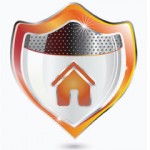Working with glass can be hazardous, but there are several safety tips you can follow to protect yourself and others from injuries. If you don’t take the proper precautions, you may face lacerations, punctures and cuts to your eyes, skin and even tendons and arteries. Working with glass is nothing to mess around with, but you can know that you are safer in the workplace by remembering the following safety tips by heart every time you work with glass.
Wear Eye Protection
Wearing proper eye protection is essential any time you enter a workspace where you or machinery handle glass. Be sure to always wear good quality goggles or safety glasses whenever you are cutting or grinding glass and spend a few extra pounds (dollars) on a high quality pair of goggles or safety glasses to provide protection for all areas of your eyes.
Wear Ear Plugs
Protect your sensitive ears by wearing ear plugs when working around loud noises. These will protect your sensitive ear drums and also prevent shards of glass from entering your ear canal and causing serious damage to your inner ear.
Handle Glass Breakage Correctly
Always use a dustpan and brush or another approved method of collecting broken glass. Never use your bare hands or materials such as sponges, napkins or towels to pick up broken glass as tiny glass particles can get stuck in them. It’s also important to post a warning sign in the area of the glass breakage to alert others about the potential danger.
Wear Closed-toe Shoes
The best way to protect your feet against damage from glass is to wear closed-toe shoes that completely cover your feet. Never wear sandals or other open-toe shoes whilst working.
Keep covered up
Keep the rest of your skin protected by wearing long sleeves. Tank tops and shorts are not proper attire for a glass workspace. Broken glass can cut the skin on your arms and legs, and dangerous chemicals and solder can burn and damage your skin.
Keep Long Hair Secured
If you have long hair, always ensure it is tied up into a ponytail or otherwise secured. Bending over and getting your hair caught in a glass grinder can be very painful. A hat or protective hair net is also helpful for those with shorter hair too.
Don’t Smoke or Eat Around Glass
Never smoke or bring your food around your glass workspace. You may be handling chemicals that can be easily transferred to your cigarettes or food. If tiny glass particles end up in something you are about to put to your mouth, they can cause serious internal damage to your body.
Keep a Well-stocked First Aid Kit
It is important to have a well-stocked first aid kit nearby and to know where it is and how to use all of the items in the kit. A well-stocked first aid kit should include bandages, burn ointment, alcohol, scissors, antiseptic wipes and gloves. Ideally, a glass workplace will also include an eyewash station.
Wear Protective Gloves
You should wear thick protective gloves whenever you have a piece of glass in your hand. Be sure that the gloves have a cuff and that they are at least as thick as a typical pair of gardening gloves.
Keep Untrained People Out of Workspace
Even if you know how to protect yourself when working with glass, injuries can still occur if untrained people enter the glass workspace. They can touch things they shouldn’t, which can cause serious injuries to both themselves and to you.
You do not need to panic when working with glass, but it is essential that you follow these safety tips to prevent injuries to yourself and others in the workspace.
Laura writes for Britannia Glass & Glazing who are expert emergency glaziers in Croydon, London, UK. They provide glass replacement and window repair in all areas of London from Glaziers in Enfield and Camden, to Hackney and Hounslow.
